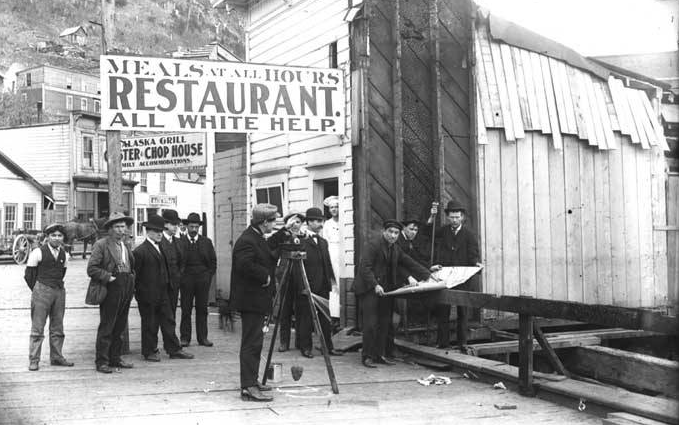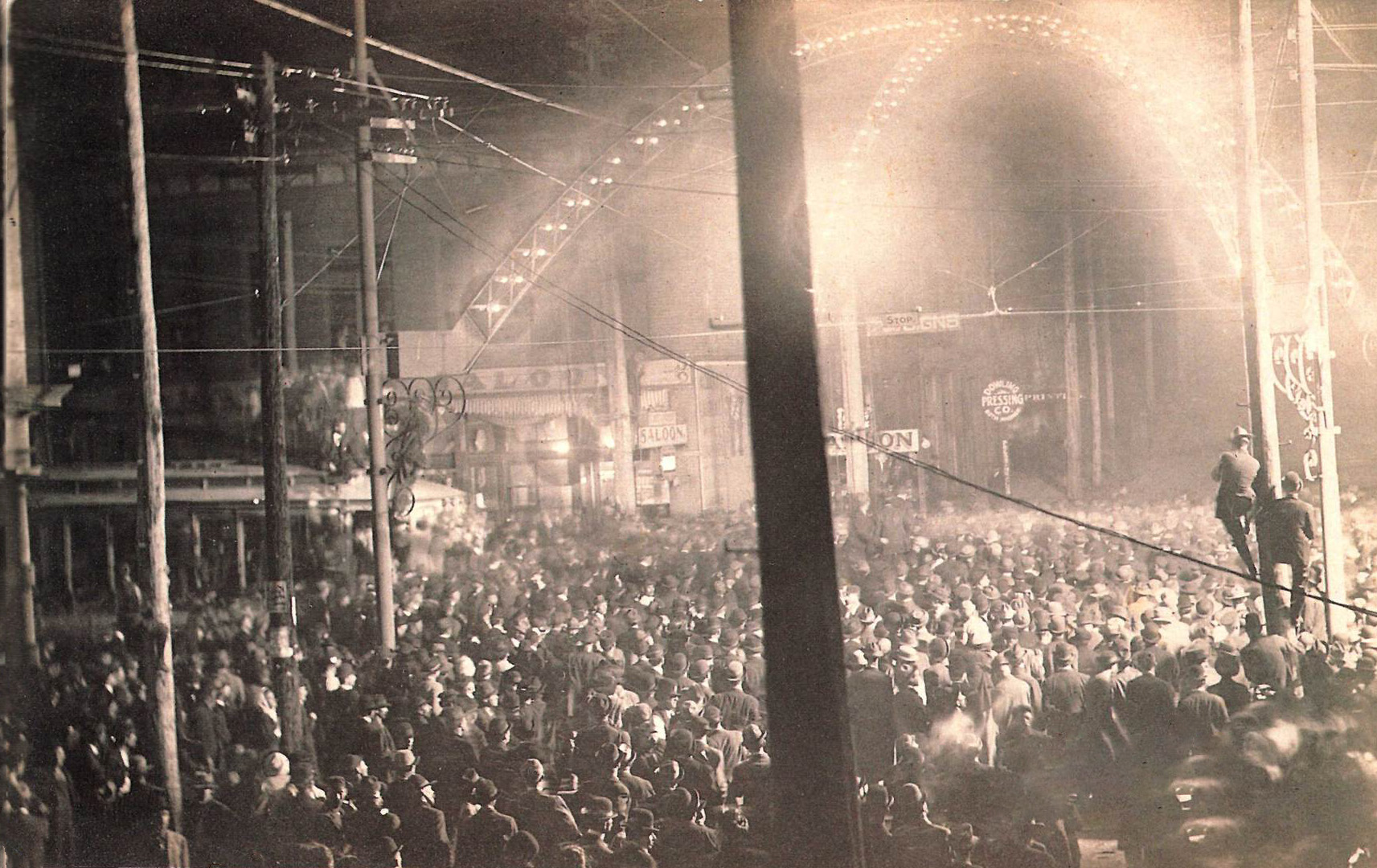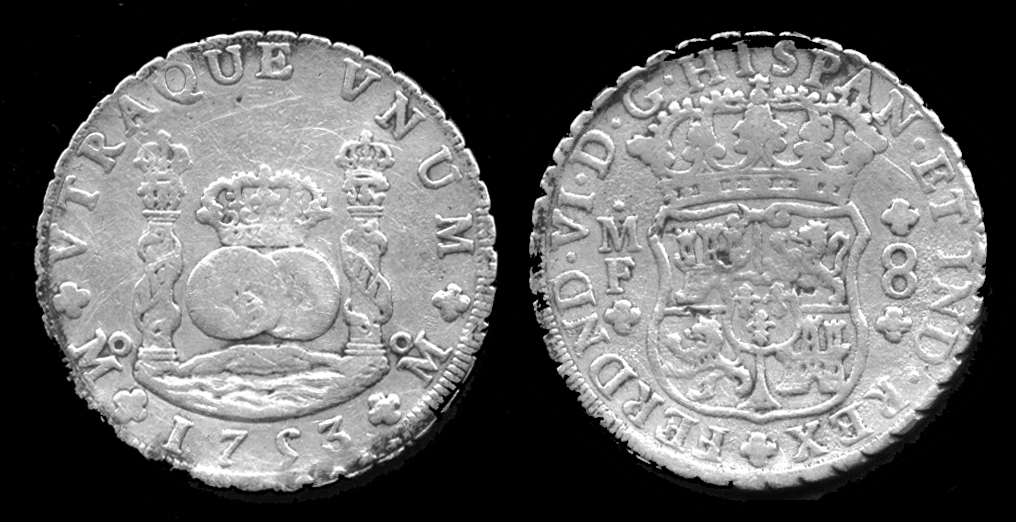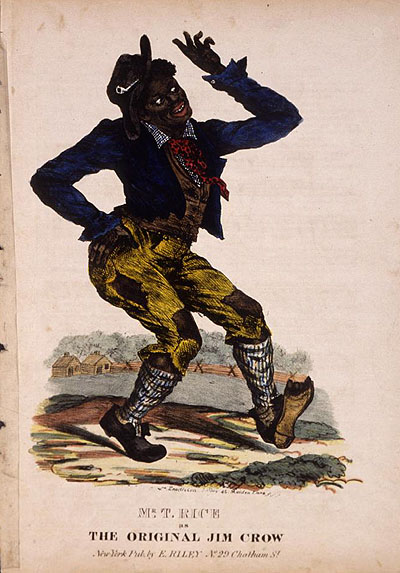|
Alaska Equal Rights Act Of 1945
The Alaska Equal Rights Act of 1945 (also known as the Anti-Discrimination Law of 1945 Alaska Statutes 44.12.065) was the first state or territorial anti-discrimination law enacted in the United States in the 20th century. The law, signed on February 16, 1945, prevents and criminalizes discrimination against individuals in public areas based on race. The law came about after Alaska Natives fought against segregation and other forms of discrimination in Alaska. Background Prior to 1945 Alaska Natives were subject to segregation and disenfranchisement. The Nelson Act of 1905 created two separate educational systems. In 1908, a child of white and Alaska Native heritage was denied entrance to the Sitka, Alaska public school. In Ketchikan, Alaska attorney, William Paul (Tlingit), won a case allowing children of mixed heritage to attend public school. Despite this win, there were still continued restrictions against Alaska Natives. Public areas like swimming pools, theaters and playgro ... [...More Info...] [...Related Items...] OR: [Wikipedia] [Google] [Baidu] |
Alaska Statutes
The Alaska Statutes comprise the statutory law of the U.S. state of Alaska, and consists of the codified legislation of the Alaska Legislature The Alaska Legislature is the state legislature of the U.S. state of Alaska. It is a bicameral institution consisting of the 40-member Alaska House of Representatives (lower house) and the 20-member Alaska Senate (upper house). There are 40 Hou .... External linksAlaska Statutes (2018)- The Alaska State Legislature Alaska law United States state legal codes {{Alaska-stub ... [...More Info...] [...Related Items...] OR: [Wikipedia] [Google] [Baidu] |
Alberta Schenck Adams
Alberta Daisy Schenck Adams (June 1, 1928 – July 6, 2009) was a teenage civil rights activist in the struggle for equality by the indigenous peoples in the United States Territory of Alaska. Her 1944 challenge to segregation practices was cited during the Territorial Legislature's proceedings in passage of Alaska's 1945 anti-discrimination law, a decade before the ''Brown v. Board of Education'' decision outlawed segregation in public schools, and before Rosa Parks in Alabama sparked a public bus boycott by refusing to give up her seat to a white person. Early life and segregated Alaska Alberta Schenck was born in Nome, Alaska, on June 1, 1928, to Albert Schenck, a white United States Army, army veteran of World War I. Her mother was Mary Pushruk Schenck of native Inupiat people, Inupiat heritage. She was born into an era when the indigenous peoples of Alaska were subjected to segregated practices that often left non-white children without an education for lack of facilities. Some ... [...More Info...] [...Related Items...] OR: [Wikipedia] [Google] [Baidu] |
Anti-racism In The United States
Anti-racism encompasses a range of ideas and political actions which are meant to counter racial prejudice, systemic racism, and the oppression of specific racial groups. Anti-racism is usually structured around conscious efforts and deliberate actions which are intended to provide equal opportunities for all people on both an individual and a systemic level. As a philosophy, it can be engaged in by the acknowledgment of personal privileges, confronting acts as well as systems of racial discrimination, and/or working to change personal racial biases. Major contemporary anti-racism efforts include Black Lives Matter organizing and workplace antiracism. History European origins European racism was spread to the Americas by the Europeans, but establishment views were questioned when they were applied to indigenous peoples. After the discovery of the New World, many of the members of the clergy who were sent to the New World who were educated in the new humane values of the Renai ... [...More Info...] [...Related Items...] OR: [Wikipedia] [Google] [Baidu] |
Civil Rights In The United States
The civil rights movement was a nonviolent social and political movement and campaign from 1954 to 1968 in the United States to abolish legalized institutional racial segregation, discrimination, and disenfranchisement throughout the United States. The movement had its origins in the Reconstruction era during the late 19th century, although it made its largest legislative gains in the 1960s after years of direct actions and grassroots protests. The social movement's major nonviolent resistance and civil disobedience campaigns eventually secured new protections in federal law for the civil rights of all Americans. After the American Civil War and the subsequent abolition of slavery in the 1860s, the Reconstruction Amendments to the United States Constitution granted emancipation and constitutional rights of citizenship to all African Americans, most of whom had recently been enslaved. For a short period of time, African American men voted and held political office, but as time ... [...More Info...] [...Related Items...] OR: [Wikipedia] [Google] [Baidu] |
Anti-discrimination Law In The United States
Discrimination is the act of making unjustified distinctions between people based on the groups, classes, or other categories to which they belong or are perceived to belong. People may be discriminated on the basis of Racial discrimination, race, Sexism, gender, Ageism, age, religious discrimination, religion, ableism, disability, or Sexual orientation discrimination, sexual orientation, as well as other categories. Discrimination especially occurs when individuals or groups are unfairly treated in a way which is worse than other people are treated, on the basis of their actual or perceived membership in certain groups or social categories. It involves restricting members of one group from opportunities or privileges that are available to members of another group. Discriminatory traditions, policies, ideas, practices and laws exist in many countries and institutions in all parts of the world, including territories where discrimination is generally looked down upon. In some pla ... [...More Info...] [...Related Items...] OR: [Wikipedia] [Google] [Baidu] |
1945 In American Law
1945 marked the end of World War II and the fall of Nazi Germany and the Empire of Japan. It is also the only year in which Nuclear weapon, nuclear weapons Atomic bombings of Hiroshima and Nagasaki, have been used in combat. Events Below, the events of World War II have the "WWII" prefix. January * January 1 – WWII: ** Nazi Germany, Germany begins Operation Bodenplatte, an attempt by the ''Luftwaffe'' to cripple Allies of World War II, Allied air forces in the Low Countries. ** Chenogne massacre: German prisoners are allegedly killed by American forces near the village of Chenogne, Belgium. * January 6 – WWII: A German offensive recaptures Esztergom, Kingdom of Hungary (1920–1946), Hungary from the Russians. * January 12 – WWII: The Soviet Union begins the Vistula–Oder Offensive in Eastern Europe, against the German Army (Wehrmacht), German Army. * January 13 – WWII: The Soviet Union begins the East Prussian Offensive, to eliminate German forces in East Pruss ... [...More Info...] [...Related Items...] OR: [Wikipedia] [Google] [Baidu] |
Online And Offline
In computer technology and telecommunications, online indicates a state of connectivity and offline indicates a disconnected state. In modern terminology, this usually refers to an Internet connection, but (especially when expressed "on line" or "on the line") could refer to any piece of equipment or functional unit that is connected to a larger system. Being online means that the equipment or subsystem is connected, or that it is ready for use. "Online" has come to describe activities performed on and data available on the Internet, for example: "online identity", "online predator", "online gambling", "online game", "online shopping", "online banking", and "online learning". Similar meaning is also given by the prefixes "cyber" and "e", as in the words "cyberspace", "cybercrime", "email", and "ecommerce". In contrast, "offline" can refer to either computing activities performed while disconnected from the Internet, or alternatives to Internet activities (such as shopping in bri ... [...More Info...] [...Related Items...] OR: [Wikipedia] [Google] [Baidu] |
United States Dollar
The United States dollar ( symbol: $; code: USD; also abbreviated US$ or U.S. Dollar, to distinguish it from other dollar-denominated currencies; referred to as the dollar, U.S. dollar, American dollar, or colloquially buck) is the official currency of the United States and several other countries. The Coinage Act of 1792 introduced the U.S. dollar at par with the Spanish silver dollar, divided it into 100 cents, and authorized the minting of coins denominated in dollars and cents. U.S. banknotes are issued in the form of Federal Reserve Notes, popularly called greenbacks due to their predominantly green color. The monetary policy of the United States is conducted by the Federal Reserve System, which acts as the nation's central bank. The U.S. dollar was originally defined under a bimetallic standard of (0.7735 troy ounces) fine silver or, from 1837, fine gold, or $20.67 per troy ounce. The Gold Standard Act of 1900 linked the dollar solely to gold. From 1934, it ... [...More Info...] [...Related Items...] OR: [Wikipedia] [Google] [Baidu] |
Dollar Coin (United States)
The dollar coin is a United States coin with a face value of one United States dollar. Dollar coins have been minted in the United States in gold, silver, and base metal versions. Dollar coins were first minted in the United States in 1794. While true gold dollars are no longer minted, the Sacagawea, Presidential, and American Innovation dollars are sometimes referred to as golden dollars because of their color. As with several other denominations of U.S. coinage, golden dollars are similar in diameter and color to their Canadian counterpart (known as the "loonie," which predates the Sacagawea dollar by thirteen years). However, unlike the 11-sided Canadian dollar coins, U.S. "golden dollar" coins are round. Dollar coins have never been popular in circulation since inception. Despite efforts by the government to promote their use to save the cost of printing one-dollar bills, such as the Presidential $1 Coin Program, most Americans currently use the bill. For this reason, sinc ... [...More Info...] [...Related Items...] OR: [Wikipedia] [Google] [Baidu] |
United States Mint
The United States Mint is a bureau of the Department of the Treasury responsible for producing coinage for the United States to conduct its trade and commerce, as well as controlling the movement of bullion. It does not produce paper money; that responsibility belongs to the Bureau of Engraving and Printing. The first United States Mint was created in Philadelphia in 1792, and soon joined by other centers, whose coins were identified by their own mint marks. There are currently four active coin-producing mints: Philadelphia, Denver, San Francisco, and West Point. History The Massachusetts Bay Colony established a mint in Boston in 1652. John Hull was Treasurer and mintmaster; Hull's partner at the "Hull Mint" was Robert Sanderson. The historical marker reads: The first authorization for the establishment of a mint in the United States was in a resolution of the Congress of the Confederation of February 21, 1782, and the first general-circulation coin of the United States ... [...More Info...] [...Related Items...] OR: [Wikipedia] [Google] [Baidu] |
Jim Crow Laws
The Jim Crow laws were state and local laws enforcing racial segregation in the Southern United States. Other areas of the United States were affected by formal and informal policies of segregation as well, but many states outside the South had adopted laws, beginning in the late 19th century, banning discrimination in public accommodations and voting. Southern laws were enacted in the late 19th and early 20th centuries by white Southern Democrat-dominated state legislatures to disenfranchise and remove political and economic gains made by African Americans during the Reconstruction era. Jim Crow laws were enforced until 1965. In practice, Jim Crow laws mandated racial segregation in all public facilities in the states of the former Confederate States of America and in some others, beginning in the 1870s. Jim Crow laws were upheld in 1896 in the case of ''Plessy vs. Ferguson'', in which the Supreme Court laid out its "separate but equal" legal doctrine concerning faciliti ... [...More Info...] [...Related Items...] OR: [Wikipedia] [Google] [Baidu] |

.jpg)






